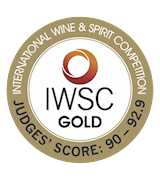TABLE OF CONTENTS
Best Provençal Foods
MAIN INGREDIENTS
Traditionally consumed by peasants in the historic Dauphiné region in France, gratin dauphinois is a savory dish consisting of thinly sliced potatoes, crème fraîche, and butter baked in a shallow earthenware cooking vessel. The dish can be eaten on its own, preferably with a salad on the side, or as an accompaniment to fish or meat dishes.
The term gratin originally referred to the flavorful crust that was left in the pan after the dish was baked. The first mention of the dish dates back to July 12th, 1788, when it was served at a dinner hosted by Charles-Henri, Duke of Clermont-Tonnerre and Lieutenant-General of the Dauphiné, for the officials of the city of Gap in the modern-day Hautes-Alpes region.
OTHER VARIATIONS OF Gratin
Daube is a hearty Provençal stew consisting of meat (mostly beef, but other meats like lamb can be used) that is simmered low and slow in wine with various vegetables and seasonings such as cinnamon, cloves, thyme, bay leaves, and peppercorns.
Preparing daube is a time-consuming process in which the ingredients are added in layers, with the meat on the bottom and the spices and vegetables on top. Traditionally, the stew is prepared in a special earthenware vessel called a daubiére, which is specially shaped to stop the evaporation of the flavorful cooking liquids.
MAIN INGREDIENTS
Originating from the French city of Nice, pissaladière is a baked tart that is similar to a pizza, but thicker. In the past, it was usually baked and sold each morning, but today it is traditionally served as an appetizer or a snack, consisting of a doughy base that is topped with anchovies, olives, caramelized onions, and fresh herbs.
The name of the dish comes from the French phrase pèi salat, which translates to salted fish, one of the key ingredients used in the preparation of pissaladière. It is believed that the dish was invented between 1305 and 1377, during the Avignon Papacy.
MAIN INGREDIENTS
Originally derived from the Genovese farinata, socca eventually became the specialty of Nice, France, where it is a street food staple. This traditional flatbread is made with chickpea flour, olive oil, salt, and pepper. Once the batter is prepared, it is transferred to a wide pan or a skillet, which is placed in the oven at very high temperature.
The batter is then baked until the socca hardens and begins to slightly burn on the edges. Once baked, socca is sliced into pieces and seasoned with salt, pepper, and a drizzle of olive oil. It can be served as an appetizer with cheese, olives, and a glass of rosé on the side.
MOST ICONIC Socca
View moreThis traditional Provençal fish soup (and stew) originated in the 18th century when it was first concocted by Marseillaise fishermen, who would prepare it using the leftovers from their daily catch, making the best of what they had in their nets.
Over time, bouillabaisse evolved into one of the most luxurious seafood dishes in the world: it is found in every upscale restaurant in the lively seaport city of Marseille where it can cost up to €200 for a meal for two. Anything below €50 is considered an ordinary fish soup—a good rule of thumb for those who want to taste the real thing.
MAIN INGREDIENTS
This aromatic, decadent spread is made with black or green olives. The original recipe includes four essential Mediterranean ingredients – chopped olives, anchovies, capers, and olive oil – combined with additional ingredients and spices to form a thick, fragrant spread.
Even though it is often described as a Provençal recipe, it was originally invented in 1880 by a chef Meynier at a Marseilles restaurant called La Maison Dorée, while the first recipe dates back to 1897, when it was published in Jean-Baptiste Reboul's La Cuisinière Provençale.
Pan bagnat is a specialty sandwich of Nice, consisting of a round bun with a crispy exterior and a soft interior that is filled with Niçoise salad, another signature dish from Nice. When translated, the name of the sandwich means bathed or wet bread, since the idea is to leave the sandwich rest in the refrigerator after the preparation in order for the flavors to soak into the bread.
The root of the name comes from the Italian pane bagnato, due to the influx of Italian immigrants to Nice in the 19th century. Flavorful and easy to prepare, pan-bagnat remains a lunch staple both in Nice and throughout France.
MAIN INGREDIENTS
Originally a poor man’s dish, soupe de poisson à la rouille is a classic French soup and a close cousin of the famous bouillabaisse. The soup is usually prepared with white fish that is cooked in a flavorful broth that mostly incorporates tomatoes, olive oil, garlic, saffron, and various herbs.
The soup is then strained and served with rouille, a classic Provençal sauce that usually incorporates bread, garlic, spices, egg yolks, and olive oil while some versions can also include monkfish liver, tomatoes, or potatoes.
MAIN INGREDIENTS
This colorful Provençal vegetable ragout is traditionally made with simple, easily accessible ingredients: courgettes, eggplants, green and red peppers, tomatoes, onions, garlic, and parsley. The name ratatouille stems from the old Occitan word ratatolha, and the French word touiller, both meaning to toss, or to stir up, referring to the cooking process in which the ingredients are first simmered separately—seasoned with salt, pepper, and olive oil—and then tossed together and stirred into a vibrant vegetable medley.
Though it wasn't until the 1930s that ratatouille was popularized, by the 1980s, the dish had become the star of any dinner party. Ratatouille can be enjoyed on its own, served either hot or cold, along with toasted garlic bread, or it can be dished out as a side to roasted or grilled meat mains, especially lamb and chicken.
VARIATIONS OF Ratatouille
Originating from Nice in the French region of Provence, the traditional Niçoise salad is a true national treasure. Both flavorful and colorful, it can be served on its own as a main dish, but is more commonly used as a garnish for a variety of meat or fish dishes.
It consists of fresh tomatoes, anchovies, black olives, capers, beans, and a drizzle of lemon juice. The salad is typically seasoned with traditional Provençal seasoning of olive oil, garlic, and basil. The authentic Niçoise should always be prepared with the freshest raw vegetables, as a sign of respect for the quality and flavor of local ingredients.
TABLE OF CONTENTS
Best Provençal Food Producers
AWARDS

Wine Spectator - 96
2022

Falstaff - 100
AWARDS

IWSC- International wine & spirit competition - Gold
2019

Decanter World Wine Awards - Best in Show
2024, 2017
BEST Gabriel Meffre Wines
AWARDS

IWSC- International wine & spirit competition - Spirit Gold Outstanding
2024
BEST Maison Solignac Spirits
AWARDS

Decanter World Wine Awards - Best in Show
2019

Decanter World Wine Awards - Platinum
2017
BEST Domaine Brusset Wines
AWARDS

International Wine Challenge - IWC Great Value Champion Red 2018
2018
BEST Domaine des Tourelles Wines
AWARDS

Decanter World Wine Awards - Best in Show
2018
BEST Cave de Cairanne Wines
AWARDS

Concours International de Lyon - Gold
2025
BEST La Ferme des Sonnailles Dairy Products
AWARDS

Falstaff - 100
BEST Domaine de la Vieille Julienne Wines
TABLE OF CONTENTS
Best Provençal Food Products
AWARDS

Great Taste Awards - 3 stars
2021
AWARDS

IWSC- International wine & spirit competition - Spirit Gold Outstanding
2024
AWARDS

Decanter World Wine Awards - Best in Show
2024
AWARDS

Decanter World Wine Awards - Best in Show
2019
AWARDS

Decanter World Wine Awards - Best in Show
2017
AWARDS

International Wine Challenge - IWC Great Value Champion Red 2018
2018
AWARDS

Decanter World Wine Awards - Best in Show
2018
AWARDS

Concours International de Lyon - Gold
2025
AWARDS

Concours International de Lyon - Gold
2025
AWARDS

Concours International de Lyon - Gold
2025






TasteAtlas food rankings are based on the ratings of the TasteAtlas audience, with a series of mechanisms that recognize real users and that ignore bot, nationalist or local patriotic ratings, and give additional value to the ratings of users that the system recognizes as knowledgeable. For the “Top 48 Provençal Foods” list until March 27, 2025, 1,778 ratings were recorded, of which 1,506 were recognized by the system as legitimate. TasteAtlas Rankings should not be seen as the final global conclusion about food. Their purpose is to promote excellent local foods, instill pride in traditional dishes, and arouse curiosity about dishes you haven’t tried.





















































